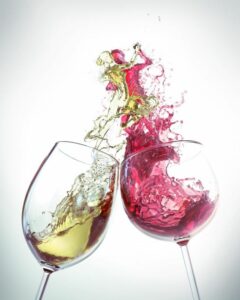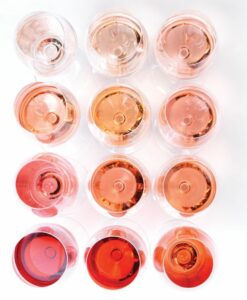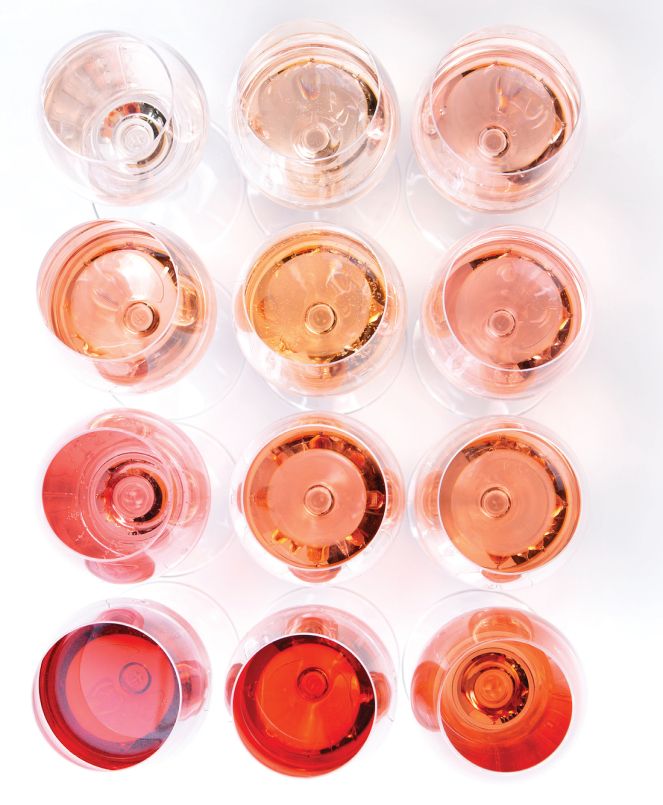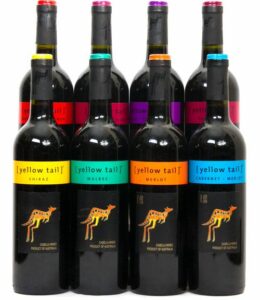Are you a wine producer or a marketer looking to develop your brand identity? One of the most important factors to consider is the color of your wine. Wine color is not just a superficial aspect of the product, it actually plays a vital role in building brand identity. In this article, we will explore how wine color can help build your brand identity and create a unique market position for your wine.

Table of Contents
- Understanding Wine Color
- Importance of Wine Color in Branding
- Colors and Their Meanings in Wine Branding
- Red
- White
- Rosé
- Orange
- How to Choose the Right Wine Color for Your Brand
- Understand Your Target Audience
- Know Your Competition
- Consider Your Brand Personality
- Think About Packaging
- Case Studies: Successful Wine Brands and Their Colors
- Conclusion
- FAQs
1. Understanding Wine Color
Wine color is determined by the grape variety, the region it was grown in, and the winemaking process. The color of wine can range from light yellow to deep purple, and it is a key factor in the sensory evaluation of wine. Red wine gets its color from the grape skins that are left in contact with the juice during fermentation, while white wine is made from juice that is separated from the skins before fermentation. Rosé wine is made by allowing the skins to remain in contact with the juice for a short time, resulting in a pink color.

2. Importance of Wine Color in Branding
The color of your wine can have a significant impact on your brand identity. Consumers often choose wines based on their color, and this can influence their perception of the taste and quality of the wine. Wine color can also communicate the brand’s personality, values, and positioning in the market. A carefully chosen wine color can help differentiate your brand from competitors and create a unique market position.
3. Colors and Their Meanings in Wine Branding
Different colors can evoke different emotions and meanings in branding. Here are some of the most commonly used wine colors and their associated meanings:
Red
Red wine is often associated with luxury, sophistication, and power. It can also symbolize passion, love, and intensity. Red is a popular choice for high-end wine brands and those targeting a more mature audience.

White
White wine is often associated with purity, freshness, and simplicity. It can also represent elegance, refinement, and sophistication. White is a popular choice for young and trendy wine brands.



Rosé
Rosé wine is often associated with romance, fun, and femininity. It can also symbolize relaxation, happiness, and warmth. Rosé is a popular choice for brands targeting a younger audience and those promoting a lifestyle.



Orange
Orange wine is a unique and unconventional choice that can represent innovation, creativity, and experimentation. It can also symbolize naturalness, authenticity, and sustainability. Orange is a popular choice for natural and organic wine brands.


4. How to Choose the Right Wine Color for Your Brand
Choosing the right wine color for your brand can be a challenging task. Here are some factors to consider:
Understand Your Target Audience
Knowing your target audience is crucial in selecting the right wine color. Consider factors such as age, gender, income, and lifestyle when choosing a color that resonates with your target audience.
Know Your Competition
Researching your competitors and their branding strategies can help you identify opportunities for differentiation. Choose a color that sets you apart from the competition while still appealing to your target audience.
Consider Your Brand Personality
Your brand personality should align with your chosen wine color. If your brand is more traditional and classic, a deep red or elegant white may be the way to go. If your brand is more modern and unconventional, a unique orange or bold red may be a better fit.
Think About Packaging
The packaging of your wine can also play a role in the color choice. Consider how the color will look on the bottle and how it will stand out on the shelf. You may also want to consider the color of the label and other packaging elements.

5. Case Studies: Successful Wine Brands and Their Colors
Here are some examples of successful wine brands and the colors they have chosen for their branding:
Yellow Tail
Yellow Tail is a popular Australian wine brand known for its fun and approachable personality. The brand’s signature yellow label and bright, cheerful colors reflect this personality and appeal to a younger audience.

Chateau Margaux
Chateau Margaux is a high-end French wine brand known for its elegance and sophistication. The brand’s deep red label and packaging reflect this luxury and appeal to a more mature audience.

Barefoot
Barefoot is a popular American wine brand known for its playful and casual personality. The brand’s colorful label and relaxed packaging reflect this personality and appeal to a younger, more fun-loving audience.

Sula Vineyards
Sula Vineyards is an Indian wine brand known for its innovation and modern approach. The brand’s bright orange label and unconventional packaging reflect this personality and appeal to a more adventurous audience.

6. Conclusion
In conclusion, wine color can play a significant role in building your brand identity and creating a unique market position. Understanding the meanings and associations of different colors can help you choose the right color for your brand, based on your target audience, competition, brand personality, and packaging. By choosing the right wine color, you can differentiate your brand, appeal to your target audience, and create a memorable and recognizable brand identity.
7. FAQs
Q1. Can I change the color of my wine once I have established my brand identity?
A1. Changing the color of your wine can be risky and may impact your brand identity. It is important to carefully consider any changes to your branding strategy and consult with experts before making any major changes.
Q2. Is it possible to have a successful wine brand without a strong color identity?
A2. While color is an important factor in building brand identity, it is not the only factor. A successful wine brand can be built on a variety of elements, including quality, price, packaging, and marketing.
Q3. Should I choose a color that is popular in the market or go for something unique?
A3. It depends on your brand personality and positioning. If you want to stand out from the competition and create a unique market position, a unique color may be the way to go. However, if you want to appeal to a broader audience and establish a more traditional brand, a popular color may be a safer choice.
Q4. Can I use multiple colors for my wine brand?
A4. Yes, it is possible to use multiple colors in your branding strategy. However, it is important to ensure that the colors work well together and reflect your brand personality and positioning.

Q5. How can I test the effectiveness of my chosen wine color?
A5. You can test the effectiveness of your chosen wine color through market research, focus groups, and consumer feedback. This will help you determine if your chosen color is resonating with your target audience and meeting your branding objectives.
The Psychology of Ivory Color in Design
The Power of Violet Color in Marketing

